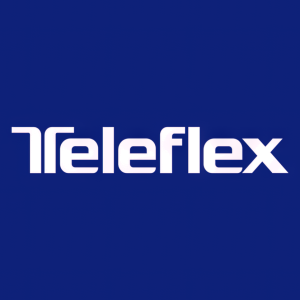Teleflex’s Climate Targets Validated by the Science Based Targets Initiative
Teleflex commits to reach net-zero greenhouse gas emissions across its value chain by 2050.
WAYNE, Pa., March 28, 2024 (GLOBE NEWSWIRE) -- Teleflex Incorporated (NYSE: TFX), a leading global provider of medical technologies, today announced its near- and long-term climate change targets have been validated by the Science Based Targets initiative (SBTi). The announcement comes ahead of the company’s release of its 2023 Global Impact Report, which will be published in May 2024.
Teleflex has responded to the SBTi’s urgent call for corporate climate action by committing to align with 1.5°C and net-zero through the Business Ambition for 1.5°C campaign. Through the establishment and validation of the near-and long-term science-based emissions targets, Teleflex has committed to reaching net-zero greenhouse gas emissions (GHG) across its value chain by 2050.
The SBTi provides a framework to help companies reduce greenhouse gas emissions that are in line with what the climate science indicates is needed to keep global warming below 1.5°C from pre-industrial temperatures.
“Climate change is one of the most challenging issues we face as a global population and Teleflex is committed to doing our part to continue to meet that challenge head on,” said Liam Kelly, Chairman, President and Chief Executive Officer of Teleflex. “By strengthening our sustainability efforts as a company, we can become a better partner to all of our key stakeholders and a better steward of the environment.”
The SBTi has validated Teleflex’s near-term science-based emissions reduction target, whereby Teleflex committed to reduce absolute scope 1 and 2 GHG emissions
The SBTi has also validated Teleflex’s long-term science-based emissions reduction target, whereby Teleflex committed to reduce absolute Scopes 1, 2, and 3 GHG emissions
As Teleflex implements initiatives to meet the validated science-based targets, the company will continue to move forward its Corporate Social Responsibility efforts to advance sustainable healthcare by focusing on its products, patients, people and the environment.
About Teleflex Incorporated
Teleflex is a global provider of medical technologies designed to improve the health and quality of people’s lives. We apply purpose driven innovation – a relentless pursuit of identifying unmet clinical needs – to benefit patients and healthcare providers. Our portfolio is diverse, with solutions in the fields of vascular access, interventional cardiology and radiology, anesthesia, emergency medicine, surgical, urology and respiratory care. Teleflex employees worldwide are united in the understanding that what we do every day makes a difference. For more information, please visit teleflex.com.
Teleflex is the home of Arrow™, Deknatel™, LMA™, Pilling™, QuikClot™, Rüsch™, UroLift™ and Weck™ – trusted brands united by a common sense of purpose.
Forward-Looking Statements
Any statements contained in this press release that do not describe historical facts may constitute forward-looking statements. Any forward-looking statements contained herein are based on our management's current beliefs and expectations, but are subject to a number of risks, uncertainties and changes in circumstances, which may cause actual results or company actions to differ materially from what is expressed or implied by these statements. These risks and uncertainties are identified and described in more detail in our filings with the Securities and Exchange Commission, including our Annual Report on Form 10-K.
Teleflex, the Teleflex logo, Arrow, Deknatel, LMA, Pilling, QuikClot, Rüsch, UroLift and Weck are trademarks or registered trademarks of Teleflex Incorporated or its affiliates, in the U.S. and/or other countries.
© 2024 Teleflex Incorporated. All rights reserved.
Contacts:
Teleflex
Lawrence Keusch
Vice President, Investor Relations and Strategy Development
investor.relations@teleflex.com
610-948-2836








